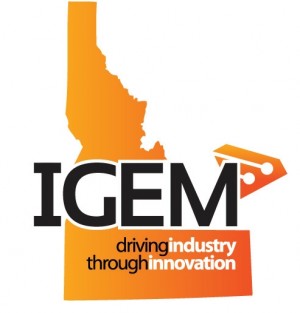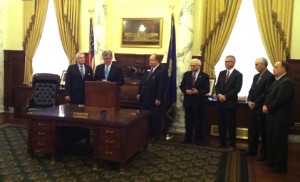Background
The 2012 Legislature overwhelmingly supported Governor C.L. “Butch” Otter’s plan to spur technology growth through university research.
The Idaho Global Entrepreneurial Mission, or IGEM, spends $5 million in general fund dollars to spur local innovation through research. The plan sets aside $1 million to the Idaho Department of Commerce for start-up business grants. The Center for Advanced Energy Studies gets $2 million. And Idaho’s three research universities split another $2 million.
IGEM also creates a 12-member council to oversee the project. Council members are appointed by the governor and include; four private sector representatives, one member of the state Board of Education, the Department of Commerce director, one representative from the Idaho National Laboratory or the Center for Advanced Energy Studies, one representative each from Boise State University, Idaho State University and the University of Idaho, and Idaho’s Senate President and the Speaker of the House.
Idaho’s innovation kick-starter is modeled after a similar program in Utah, dubbed USTAR. Except, Utah lawmakers funneled nearly $100 million into USTAR. NPR recently reported on the successes of Utah’s program, which launched in 2006.
“The program invested more than $100 million in the state’s universities. The goal was to recruit top researchers in key economic areas from around the world. By all accounts the program is working — the researchers Utah recruited to the state are creating real economic value.
“Absolutely,” University of Utah President David Pershing said. “We have certainly had faculty that have come in the USTAR program and have now started up small companies.” The program created even more jobs than Utah officials expected. Some of the academics the state recruited brought existing companies with them.
Adam Bartelmay / Boise Metro Chamber of Commerce
Gov. Otter signed HB 546 (IGEM) into law this afternoon
At the same time, the University of Utah took steps to help make it easier to turn cutting-edge research into a business. It reformed its technology licensing system. It created a new vice president in charge of technology transfer and helped introduce business students to the engineers and scientists doing the research.” – NPR.org
We’ll update information about IGEM as Idaho’s program takes shape. The bill was signed into law March 14, 2012.






